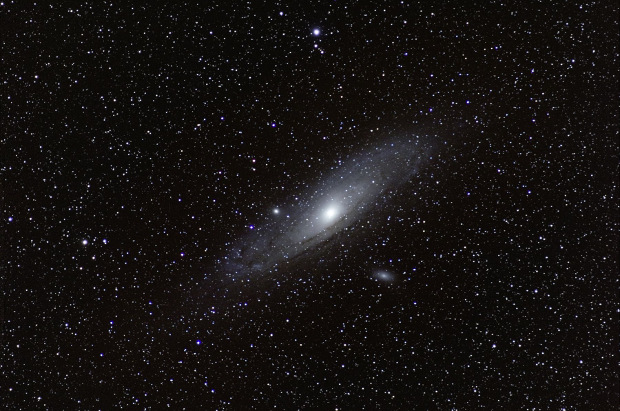
CONSIDERING we are not far from the big smoke, we are lucky to have such clear skies in Baw Baw. Now, with the warmer months upon us, this is a great time to get outside on a clear night and look up!
Above: The Andromeda galaxy. Image: NASA.
This story was first published in the 14 November 2014 edition of the Warragul & Baw Baw Citizen.
ADVERTISEMENT
One of the most fascinating but overlooked objects for the casual skywatcher are rarely spotted, yet are most massive objects in the universe: galaxies.
Galaxies are huge clusters of stars, once called island universes, consisting of billions of individual stars clumped together in either small “dwarf” galaxies, huge “spirals” or massive, loosely structured glowing balls called “eliptical galaxies”. When you look up at the band of stars called The Milky Way, you’re looking at an arm of the spiral that makes up part of our own galaxy.
The spaces between galaxies are unimaginably vast and, for the most part, empty.
Looking south, and a few hand spans over the horizon after the sun goes down, you will notice two fuzzy patches not far from the Southern Cross and pointers. These are small satellite galaxies, called the Magellenic Clouds. They are gravitaionally linked to The Milky Way and can be seen clearly without binoculars, however using a pair will reveal more of their structure. They are made up of millions of individual stars. The smaller one is the location of the most evident exploding star to Earth in over 400 years, known as Supernova 1987A.
ADVERTISEMENT
At this time of year if you turn around and look directly north, close to the horizon on a dark, moonless night, you might be able to spot the great spiral galaxy, Andromeda. It appears larger than the full moon, but much fainter. This is the closest “true” galaxy to our own and the first to be identified as an external island universe – it was in fact first thought to be a nebula, or giant glowing ball of gas within The Milky Way.
At 2.5 million light years away, Andromeda is the furthest object you can see with the naked eye and is about twice the size of the Milky Way. If you view it through binoculars, you may be able to see some of its shape and dark lanes of dust.
Finally, looking almost directly above your head using a pair of binoculars or a small telescope, you might spot a third galactic delight: the Triangulam or Pinwheel Galaxy. Smaller and further away than Andromeda, it presents itself less edge on and is a more challenging target for the casual observer, but well worth the search.
You don’t need a big telescope to start enjoying the night sky, just your eyes, maybe a pair of binoculars and perhaps a star map app on your smartphone. I recommend Cosmos Celestron Navigator or Google Sky for beginners. It will start you off on your journey through the stars!




Does time have an affect on dsitance? If two objects are very far from each other (say, 1 billion light years) and are stationary relative to eachother (no velocity is bringing them closer or father apart), how far apart will they be from each other in a very long time (say 1 billion years)?What is the farthest dsitance an object can be such that light could never reach me (due to the expansion of space causing space to expand faster than the light can cover the additional dsitance, if that makes any sense)?